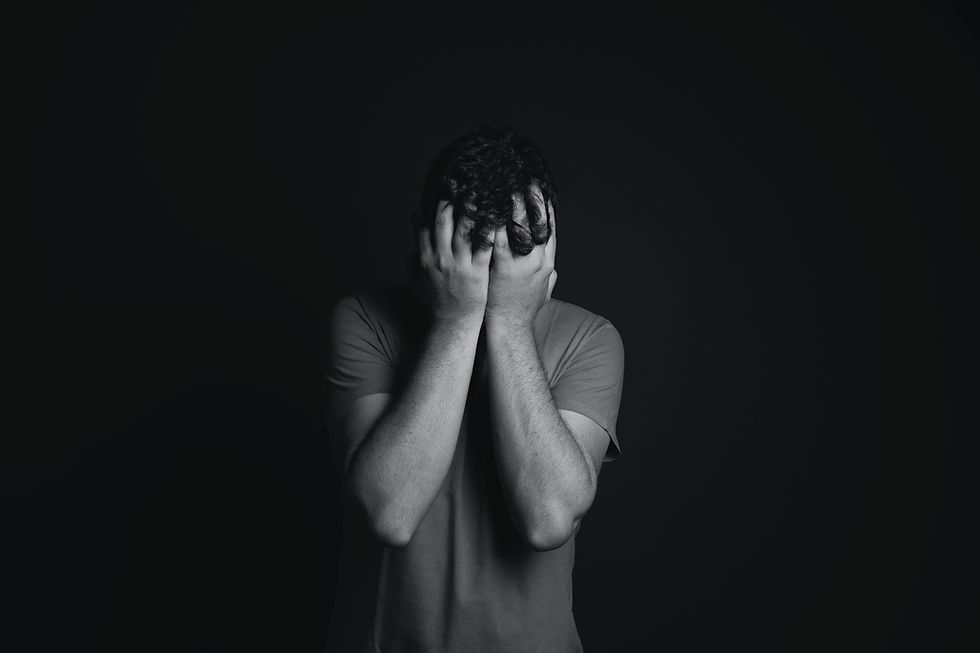Fashion and Mental Health: A Menacing Relationship
- Kieran Priest

- Oct 7, 2020
- 4 min read
Updated: Aug 20, 2021
As little as 10 years ago, mental health issues such as depression and anxiety were considered taboo. If somebody was suffering from mental illness, they’d not be taken seriously. However, as time has progressed, so have we as people.
Mental health issues are now so common that we’ve had to change our approach to it. As humans, we are more compassionate than ever before. We are more supportive than ever before. We are more understanding than ever before.
Thankfully, there are more mental health services available to us both online and on our doorsteps. But why are there so many people suffering from mental health problems? In the UK, 1 in 4 people will experience poor mental health. However, only 1 in 8 people who have these problems actually seek support. It could be argued that to some extent mental health is still taboo for a lot of people.
Mental health in the fashion industry
Mental health statistics within the fashion industry do not paint a pretty picture. Those who are based in the industry are 25% more likely to experience mental illness. A study conducted by the US Center for Disease Control confirmed a strong correlation between developing mental illnesses and working in the fashion industry. The industry ranked 7th highest on the list, ranking higher than doctors, lawyers, and accountants.
But that’s not all. The tragic suicides of Kate Spade and Alexander McQueen triggered more people to dig deep into the issues of the industry. Supermodels and fashion icons have been confessing their battles with mental illness. Kate Moss and Isabella Blow are just two of the long list of models who have spoken about their struggles.
Despite all of this, there still seems to be an awkward silence of sorts in the industry when it comes to mental health. Isn’t it time we realised our actual happiness is more important than perceived happiness?
Could this be down to the sheer fast-paced and everchanging environment the industry poses? Or is there something more sinister like the high and mostly unrealistic standards that are set in the industry?
Speaking of unrealistic standards…
When you typically think of a fashion model, you instantly think good looking, in-shape, and photogenic. The models you see are so toned and attractive that we are made to think that is what perfection looks like. Due to these unrealistic standards set in the fashion industry, there has been an increase of consequential mental health issues.
It’s been proven that poor body self-image can trigger mental health issues ranging from anxiety and self-disgust to suicidal thoughts. Research by the Mental Health Foundation (MHF) has shown that 57% of 18- to 24-year-olds have admitted to having felt anxious because of their body image. Complementary to this, a worrying 10% of women have deliberately self-harmed because of their body image compared with 4% of men.
These statistics are extremely scary.
Learning from experience
As a man myself, I personally feel like the unrealistic body standards of men are underplayed in society. Even as a child, I was concerned with my body image and was scared to take my t-shirt off in public, something which I have thankfully overcome as I aged.
However, the fact I was scared of how my body would look to others as a child shows mental illness of some sort is embedded in us at such an early age. Something needs to change.
Looking at ads for clothing websites, the male models are shredded with six-packs. Why? Because that’s what we as a society are made to believe is ‘attractive’. In reality, most men can’t and won’t ever look like the Greek Gods shown at fashion shows and on adverts.
Whilst there has been some change with plus-sized models modelling for larger men, there’s still not enough being done to break the six-pack stigma and it’s not helping men’s mental health where body image is concerned.
This is not to undermine the issues of unrealistic body standards of women, however. Not even a week ago, Love Island’s Molly-Mae was naturally photographed in her bikini, and the resulting photographs were rife with abuse and ridiculing of her body. It’s disgusting that this is happening in this day and age.
How can we change these standards?
The fact of the matter is, these standards need to be made more realistic. Using plus-sized models is a start. But it’s simply not enough. We need to see more diverse body types modelling both in fashion shows and for fashion retailers. Of course, there’s nothing wrong with using physically fit models, but there needs to more normality in the standards used in fashion.
Nobody should be expected to look a certain way. That’s why the sooner changes are made, the more chance these unrealistic standards are removed from society. The implications of this could be huge. We could see mental health and body image-related statistics significantly improve.
I’d like to encourage you to take a look at some of the amazing work across Mindless Mag, particularly the other fashion and mental health articles. Not only are there some amazing and interesting articles, but there are also plenty of opportunities to learn more about mental illness.
If you’re suffering from mental health issues…
If you or anyone you know are suffering from mental health problems, please speak to someone. You may not think it, but getting things off your chest can make a huge difference. For any advice and support, please check out the NHS’s dedicated website for mental health.



Comments